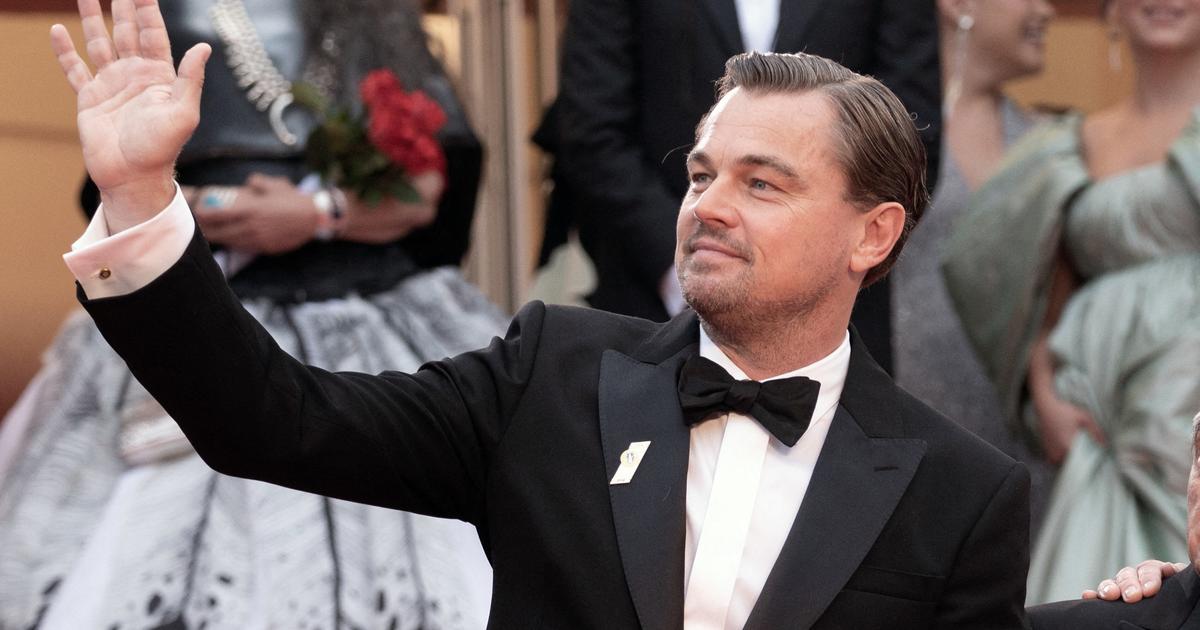With Leonardo DiCaprio as investor and advisor, the Diamond Foundry company has made the sun and solar technology key to its choice of location for its new diamond factory project - settling on Trujillo in the Extremadura province of Cáceres.
As well as being one of the most precious jewels in the world, diamonds are also used in industry due to their properties as a semiconductor, with the potential to convey one million times more electrical current than silicon.
The drawback is that nature takes several thousand years to form a diamond underground.
DiCaprio was keen to get behind the project - these are diamonds with no stigma attached
Now, however, technology companies such as Diamond Foundry have managed to “grow” the gems, using plasma reactors that reproduce the pressure and heat conditions necessary for their creation.
These diamonds - which are free from the negative suspicions often associated with those extracted from the bowels of the earth, as depicted in Leonardo DiCaprio's movie
Blood Diamond
- are ready in six to 10 weeks.
But the whole process requires vast amounts of energy, which the company wants to come from renewable sources.
Motivated by what he learned from his role in the 2006 movie that exposed the links between diamond mining and the financing of conflicts in Africa, DiCaprio was keen to get behind the project - these are diamonds with no stigma attached. Diamond Foundry sells itself as a company untainted by dubious ethical and environmental practices, stating that its laboratory diamonds have none of the high environmental impact caused by mining.
Set up in Silicon Valley in 2012, Diamond Foundry already has a manufacturing plant in Wenatchee in the US state of Washington, which is powered by hydroelectric energy generated in the Columbia River Basin.
Regarding Trujillo, the company is keen on exploiting photovoltaic technology, a sector its co-founder and CEO, Martin Roscheisen, has been involved in for years.
“The availability of solar energy is very high in Extremadura and we want our smelting to be powered by renewable energies,” he tells EL PAÍS via email, explaining the choice of location. from solar energy, with the support of storage batteries.
The historic center of Trujillo, Cáceres.PACO PUENTES
But the buzz last weekend in this historical town of around 9,000 inhabitants was not so many diamonds as the prequel to the famous HBO show
Game of Thrones
, which has just confirmed that Trujillo will once again be used as a backdrop. Trujillo's mayor, socialist José Antonio Redondo Rodríguez, says that since the Californian company announced its intention to establish a factory in the vicinity in June, many locals have been stopping him in the street to ask him about job possibilities. According to Redondo Rodríguez, speaking from the imposing town hall, flanked by old banners and portraits of illustrious Trujillo citizens, the rural environment of Extremadura and the south of the Peninsula is an attractive proposition for the industry. “We can offer energy self-sufficiency,” he says. And that is crucial for a company with large power needs.
If everything goes according to plan, Diamond Foundry's 30,000-square-meter factory will be built five kilometers away from the mayor's office, in the Arroyo Caballo industrial park. The plasma reactors, which are to operate 24 hours a day, will be installed there, and the 120-megawatt solar plant, which requires around 200 hectares of land, plus the storage infrastructure, with a capacity of another 60 megawatts, will be developed at another site yet to be decided on.
Powen, a Spanish company specializing in energy self-consumption for homes and businesses, is in charge of this part of the project.
Rafael Benjumea, founder of Powen and head of the Spanish photovoltaic employers' association (Unef), stresses the importance of an international company choosing Spain on account of the availability of "cheap, renewable energy."
“It is a process of relocation for electro-intensive industries,” he says of the possibilities that are opening up for the country.
Promises of employment
A kilometer away from the Arroyo Caballo industrial park is the huge ham-curing warehouse that the company Navidul opened more than 20 years ago.
The agri-food industry currently drives the economy in Trujillo, but if the diamond initiative goes ahead, another engine of economic growth will come to town.
“It will not only bring direct employment, but also economic activity generated around the satellite companies linked to the project,” says the mayor.
From left to right, the founders of Diamond Foundry: Martin Roscheisen, Jeremy Scholz and Kyle Gazay. Diamond Foundry
When the initiative was presented in June, the developers indicated that 300 direct jobs would be created. But Roscheisen is now saying that when the factory is at full capacity it will have 650 workers, and that's without taking the indirect jobs into account, meaning an impressive number of vacancies for a town like Trujillo.
Roscheisen says that his company is “committed to investing in Trujillo,” but explains that the project is in its initial phase and there are still many issues to be resolved regarding permits, project planning and the energy required for such a factory. He also points out that the development of batteries and their falling costs will be a determining factor. Financing issues also have to be determined. Benjumea points out that the entire project, including the factory with the reactors plus the solar plant and storage, requires an investment of some € 800 million, and says that around 40% will be provided by the company itself while the remaining 60% will come from public and private financing and from various existing European subsidies.
Meanwhile, the two companies, Powen and Diamond Foundry, have signed a collaboration agreement with Extremadura's regional authorities and the central government, which has led to the creation of a monitoring committee for the development of the project.
The committee's second meeting will be held in mid-September, according to the Extremadura minister for ecological transition, Olga García.
“It is not the only large industrial project that has been interested in setting up in Extremadura, and all of them highlight the advantages of the availability of land and solar resources,” she says, adding that the processing of the permits could be completed within a year;
Roscheisen plans to start production in 2024.
Leonardo DiCaprio, in a scene from the movie 'Blood Diamond.'
In 2008, Trujillo achieved its first solar milestone when it inaugurated La Magascona, then the largest photovoltaic plant in Europe. The 20 megawatts of power it generated seems insignificant today compared to photovoltaic plants now operating in Spain that are producing more than 500 megawatts. There has also been a striking fall in the investment needed: La Magascona required € 250 million. “Today a 50 megawatt plant needs an investment of € 25 million,” says Francisco Barrantes, head of project development at Fotowatio, the company that built La Magascona and now wants to install more panels in Trujillo.
Fotowatio is currently owned by a Saudi Arabian investment fund.
But this company was also created by Rafael Benjumea, whose family has close ties with Trujillo - another determining factor in the choice of this municipality for the diamond project, along with the fact that Roscheisen appreciates the region's electrical "infrastructures," which are perfect for a project with such high energy needs.
Water treatment
The company is insisting on renewable sources precisely because of these high-energy requirements, but it also needs water for the reactors' cooling systems.
“We are planning to build another water treatment plant so that the factory can reuse this water,” says Trujillo's mayor.
The diamonds manufactured by Diamond Foundry are currently used for jewelry, but also for industrial activities, which would be the main use for those made in the Trujillo factory.
"We will produce diamond crystal chips," Roscheisen says, explaining they "can be used to make semiconductors more efficient."
He adds that a fraction of the production will also go to the so-called mid-tier diamond industry: “Large buyers in India that serve all industries that need diamonds, including jewelry,” he says.
Spanish version by
Simon Hunter
.








/cloudfront-eu-central-1.images.arcpublishing.com/prisa/FGQS6IDNB5EX5EXV5SLJ3ZATFY.jpg)
